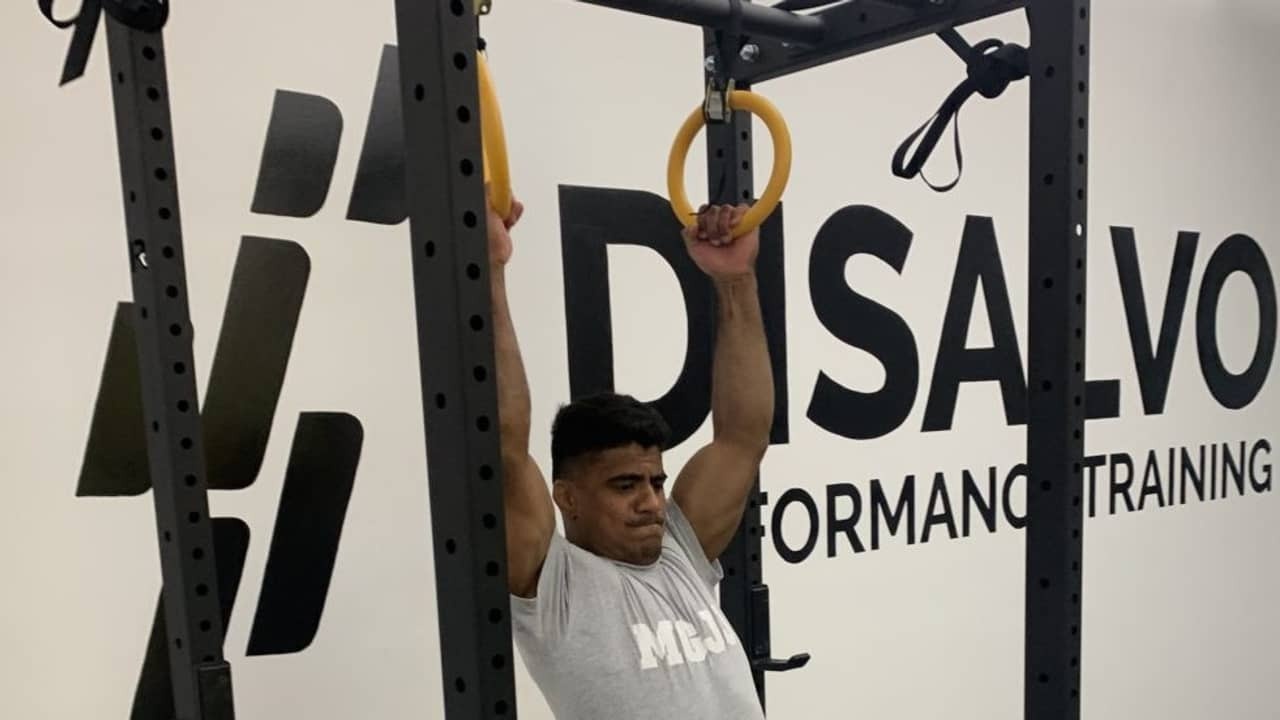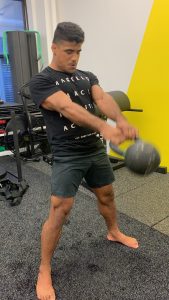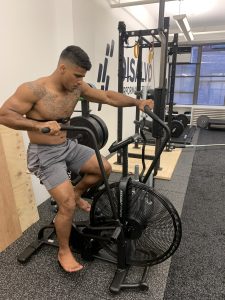
[Quarantine Workouts] What Should I Be Doing Right Now with My Training?
By Mark Disalvo
Unless you’re one of the lucky ones, jiu jitsu with partners probably isn’t possible right now. You may have tried running or haphazardly doing 100+ push-ups a day, lasting about 6 days before you were ready to risk it all, break into your academy, and let them drag you out in cuffs kicking and screaming. I get it. In this article I'm going to share some of my thoughts of quarantine workouts.
 Like many of you, I’ve spent the past 3 months helping myself stay sharp for the eventual return to the mats and helping others do the same.
Like many of you, I’ve spent the past 3 months helping myself stay sharp for the eventual return to the mats and helping others do the same.
It’s been a hard time for a lot of us, but it doesn’t mean you can’t do a lot of good for yourself and your fitness/health. If you want to take it a step further, there are many things you can do for your performance that will set you up very nicely for that eventual return to the mats.
Depending on the person and what you have available to you, there’s a variety of approaches you can take. Below, I’ve listed the main goals I’ve been outlining for my clients in the time since the quarantine began, and a bit on how I would approach each one.
Work On Your Energy Systems. Specifically, your Aerobic Energy System
 Energy Systems, or more bluntly put, your conditioning, is something that ails all grapplers in the best of times. Usually, most find their training on the mats gets them very far, and they’ll sprinkle in the occasional outside “cardio".
Energy Systems, or more bluntly put, your conditioning, is something that ails all grapplers in the best of times. Usually, most find their training on the mats gets them very far, and they’ll sprinkle in the occasional outside “cardio".
Well, now is the time to dump it on, rather than sprinkle. While conditioning is very specific to the activity, a great deal of progress can be made by very common home-gym pieces of equipment.
To understand how to best utilize whatever you have available to you, it helps to first know a little bit about your conditioning, energy systems, and how to actually train each.
For the purposes of this article, I want to just focus on the Aerobic System and how to train it (note for clarity: some coaches refer to this as the Oxidative Energy System).
Regardless of current affairs or conditions, your aerobic energy system is a great place to start. It is most simply defined as the body’s energy system when you are doing work that can be 100% supplied and accounted for with oxygen. In other words, if you can easily breathe through it (like walking, jogging), you’re utilizing the aerobic energy system. The kicker here is that if you can get more activity done while maintaining your breath and a relatively low heart-rate, you are actually becoming more efficient just on the merit of being able to perform more work at a lower heart rate.
I often like to monitor Aerobic Energy Systems for grapplers in two ways:
- Their baseline cardio/health (keeping an appropriate heart rate while walking,
training, or having a healthy morning resting rate) - Their aerobic power output, which I measure in watts via an Assault/Air Bike or
similar full body cardio machine.
If I notice the metrics are lacking in either, we start there. To me, energy systems training for jiu jitsu really starts and ends here. If you are not at a baseline that is adequate, you’re building your body on a marshmallow foundation rather than cement.
Conversely, if you fail to develop a respectable power output at lower heart rates, you are leaving a lot of athletic development on the table.
I suggest training this way:
Use any cardio machine available to you: Air Bikes are preferable, but Versa Climbers, Bike Ergs or any spin/cardio machine will also work very well. Monitor your average wattage at ANY interval and track it’s progress. I like to start with watching the output during 2-minute intervals, at minimum (at a reasonable HR, you should not be puking).
Roadwork: get out and run for 20-30 minutes. If you’re more experienced, go as much as 40 minutes per run, but do not add in sprints or intervals: it’s a jog.
Kettlebells: In my live-streaming Kettlebell classes (held every week on my Instagram), we regularly work the aerobic energy system by training in longer intervals with simple complexes. We adjust the rest times each class, but a 1:1 work rest ratio is a great place to start. You may also enjoy Carmen Bott’s articles on this topic on this very site.
Work on your Strength
 I would normally list strength training in bold letters and feature it first on any article regarding what quality grapplers should develop more. However, not everyone has a serviceable home gym to drive their strength up in meaningful ways.
I would normally list strength training in bold letters and feature it first on any article regarding what quality grapplers should develop more. However, not everyone has a serviceable home gym to drive their strength up in meaningful ways.
With that said, you can do a lot of good if strength is something you are more novice at. You can never go wrong with the basics: pull-ups, push-ups, squats, using kettlebells and dumbbells for foundational movements (Romanian deadlifts, single-leg work, split stances, etc).
If you have a serviceable home gym or live in a state/country where you can visit a full sized gym, check out my Jiu Jitsu Strength program or coming soon here to FCC, Advanced Jiu Jitsu Strength. Simple alternatives here are to pick 2-3 barbell or multi-joint lifts and progress them. Vary the bars, implements or sets/reps every few weeks to see how your strength translates to different implements and always attack your weaknesses first.
If you’re really in a bind (and trust me, I get it, I live in NYC and we all have been locked in apartments for 3 months), try improving your pull-up numbers (both reps per set and weight attached to you). You can get weight belts on Amazon for as little at $13 (I did at the beginning of this, as I left mine at the gym!). Work on improving your 3RM (Rep Max) with weight attached to you. If you can bring that number up over any period of time, I promise you’ll feel much stronger on the mats.
Work on improving your health and your body composition
I wrote about this topic a while back here on Get Physical: a pause from jiu jitsu training doesn’t mean you have to pause from training to improve your body in a general sense. More importantly, bolstering your health is the best insurance policy for both your training life and real life.
The fact is, jiu jitsu is a weight class sport and if you’re not optimizing your weight (body fat percentage for one thing), you’re only hurting yourself. Now more than ever, it’s extremely important to hedge your bets and maintain the best health standards you possibly can: start by improving your diet and managing your sleep schedule more optimally.
Work on your breathing.
This ties back into developing your conditioning a bit better, but I would offer you this: most athletes with self proclaimed issues of endurance that come into my gym/studio, do not necessarily start with training hard, but rather, their breathing mechanics. Your breath control determines a lot about your recovery immediately following hard bouts of exercise, current mental state, and a host of other markers.
It’s worth noting too, that dysfunctional breathing patterns will be at an all-time high with so many folks wearing masks and face coverings in public places and businesses. Get ahead of it and make sure this becomes a non-issue for you.
Start with organizations like Art of Breath, XPT, or Patrick McKeown’s book “The Oxygen Advantage.” All resources offer basic breath exercises you can implement immediately.
I hope this helps give you a bit more to work on in your time away from the mats. The truth is, the more you improve all of the qualities and outcomes above, the better athlete you’d be in the best of times. When you are developing workouts during the quarantine, I hope you are able to use some of these tips and keep moving during this strange time.




